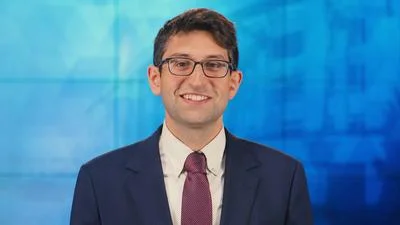WASHINGTON, DC - The Subcommittee on Environment, chaired by Rep. John Shimkus (R-IL), held a hearing today examining legislation to reform the New Source Review (NSR) permitting program. The draft legislation, led by Rep. Morgan Griffith (R-VA), aims to bring greater certainty to the NSR permitting process, making it easier for industry to modernize existing facilities and carry out environmentally beneficial projects.
Rep. Morgan Griffith delivers remarks about his draft bill
“At a February hearing in this Subcommittee, we learned that the uncertainty, complexity, and burdens associated with the NSR permitting program are deterring companies from properly maintaining and upgrading existing manufacturing plants, power plants, refineries, and industrial facilities. This is disappointing because it means we are missing out on opportunities to increase the nation’s industrial capacity, to create more American jobs, and to improve our environment," said #SubEnvironment Chairman Shimkus. “The discussion draft before us today reforms the NSR program by clarifying which types of facility upgrades require an owner to obtain an NSR permit."
Full Committee Chairman Greg Walden (R-OR) outlined real world examples of the unnecessary burdens of the NSR program, saying, “At our NSR hearing earlier this year, we learned of a case in the pulp, paper, and packaging industry in which a facility was forced to make more than $100,000 in additional assessments and incurred substantial delay-for a project that would actually reduce pollution. In another project, a paper mill sought to shut down two older and inefficient boilers and upgrade a larger boiler to meet the same power needs more efficiently. Due to EPA NSR interpretations that ignored the replaced boilers, this project was subject to 18 months of costly red tape, and scope adjustments-again, for a project that would not increase emissions."
“But federal regulatory policies such as New Source Review often get in the way of utilities adopting such technologies that would actually improve power plant efficiency and reliability as well as reducing emissions. The NSR program is overly complicated and creates significant litigation uncertainty for regulated entities," explained Kirk Johnson, Senior Vice President of Government Relations for the National Rural Electric Cooperative Association, echoing Walden’s examples. “As a result of these concerns, NSR in its current form can often undermine the goals and intent of the Clean Air Act."
Ross Eisenberg, Vice President of Energy and resources Policy at the National Association of Manufacturers also laid out how current NSR guidelines undermine business’ efforts to increase efficiency and reduce emissions, stating “NSR also presents a huge impediment to the installation of more efficient technologies that would ultimately combat climate change. An inability to define what is “routine maintenance" has resulted in NSR Notices of Violation being issued for environmentally beneficial projects like economizer replacement, steam turbine upgrades, feed water heater replacements, and similar activities…The NAM supports legislation to remove barriers to the installation of energy efficient and environmentally beneficial technologies, key steps toward addressing the environmental challenges of current and future generations."
Witnesses look on as members give opening statements
“Over the years, the NSR program has become a complicated mess that makes it more difficult for companies to do things that we should all want them to do - like maintaining the reliability and safety of their facilities and making them more efficient. In some parts of the country, it effectively bans the construction of new facilities even if they use state-of-the-art pollution controls and would not have a meaningful impact on the environment - and even if the communities where they would be located desperately want them to be built. It is certainly true that the NSR program does result in environmental benefits, especially as it applies to new facilities. But these benefits can be preserved by reforming NSR in a thoughtful way that would provide regulatory certainty and dramatically reduce the burden that it imposes on U.S. businesses and workers," added Mr. Jeffrey R. Holmstead, Partner at Bracewell LLP.
“I strongly support the overall goals of the discussion draft," said William L. Wehrum, Assistant Administrator of the Office of Air and Radiation at the Environmental Protection Agency (EPA). “The principal focus of the discussion draft on refining the definition of “modification" in the Clean Air Act would go a long way towards simplifying application of the NSR program. It makes clear that a project undertaken at an existing stationary source will trigger NSR only when that project would result in an increase in the source’s maximum design capacity to emit - that is, result in an increase in the source’s hourly emission rate, which is how emissions increases have always been determined under EPA’s New Source Performance Standards Program (NSPS) program."
“We should have an NSR program that presents clear standards for when reviews are necessary: this will lead to more efficient business decisions, more efficient permitting decisions, and more environmentally beneficial operations. We should have a program that works within the broader framework of state decision-making concerning permitting and meeting clean air standards," said Walden. “I also want to thank Mr. Griffith for his hard work on the draft to date. He is taking important steps that will provide for economic expansion, while maintaining environmental protections. Doing this will ultimately benefit American workers and consumers around the nation."
The Majority Memorandum, witness testimony, and an archived webcast are available online HERE.




